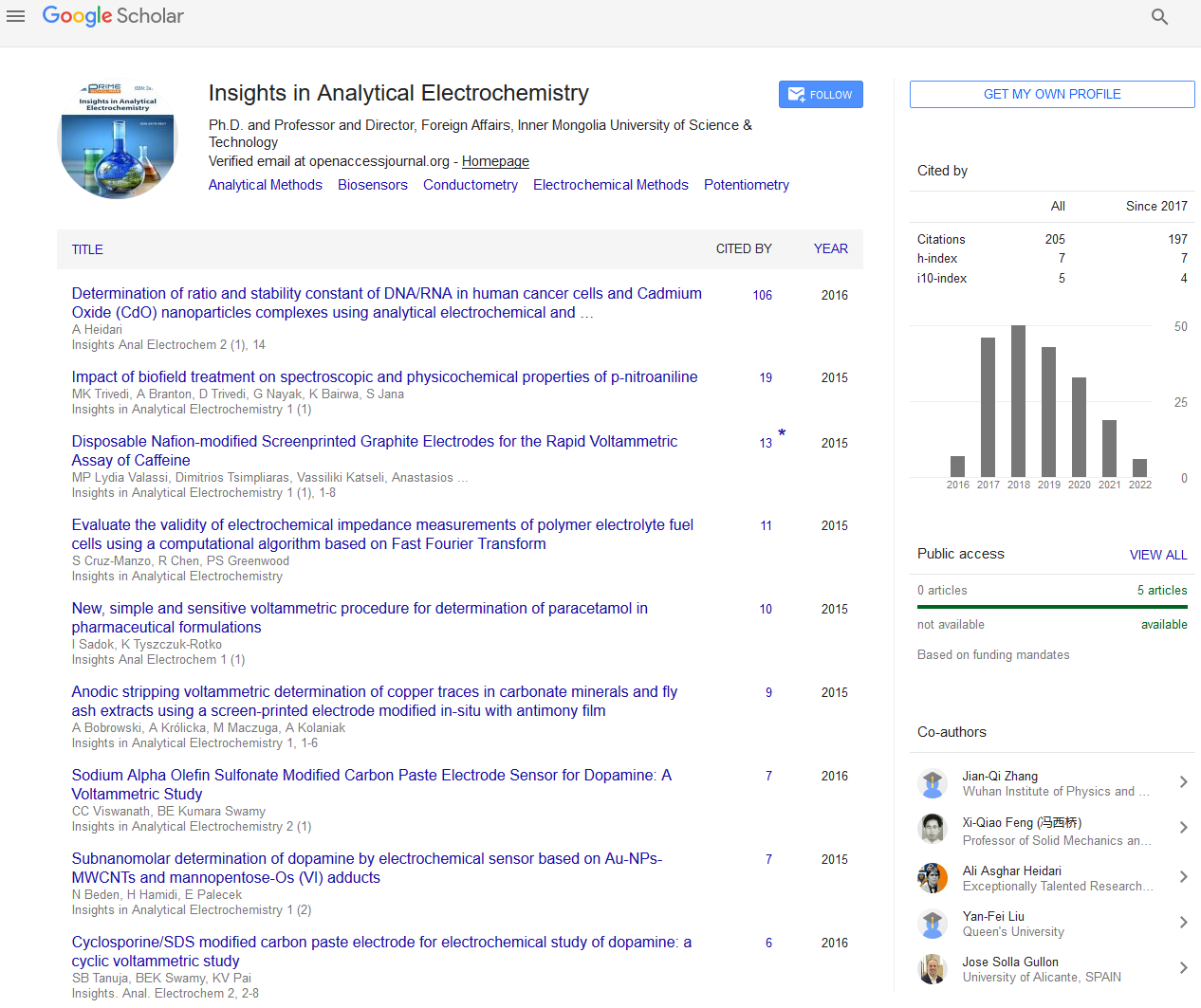Opinion - (2024) Volume 10, Issue 2
Spectroscopy: Unveiling the Secrets of Matter
Chen Chen*
Department of Analytics, Peking University, China
*Correspondence:
Chen Chen,
Department of Analytics, Peking University,
China,
Email:
Received: 29-May-2024, Manuscript No. IPAEI-24-20791;
Editor assigned: 31-May-2024, Pre QC No. IPAEI-24-20791 (PQ);
Reviewed: 14-Jun-2024, QC No. IPAEI-24-20791;
Revised: 19-Jun-2024, Manuscript No. IPAEI-24-20791 (R);
Published:
26-Jun-2024, DOI: 10.36648/2470-9867.24.10.16
Introduction
At its core, spectroscopy involves the measurement of the
interaction between electromagnetic radiation and matter.
When light interacts with a substance, it can be absorbed,
emitted, or scattered, and each of these interactions provides
unique information about the substance. The study of these
interactions forms the basis of different spectroscopic
techniques. The electromagnetic spectrum encompasses a
wide range of wavelengths, from gamma rays and X-rays to
Ultraviolet (UV), visible, Infrared (IR), microwaves, and radio
waves. Each region of the spectrum corresponds to different
energy levels and types of interactions with matter. For
instance, X-ray spectroscopy involves high-energy interactions
that can probe the inner electronic structure of atoms, while
infrared spectroscopy deals with lower energy interactions
related to molecular vibrations and rotations.
Description
In absorption spectroscopy, a sample absorbs specific
wavelengths of light, causing electrons to move to higher energy
levels. By measuring the absorbed wavelengths, scientists can
identify the elements and molecules present in the sample. This
technique is widely used in chemical analysis and environmental
monitoring. Emission spectroscopy involves the analysis of light
emitted by a substance. When atoms or molecules are excited
by an external energy source, such as heat or electrical energy,
they emit light at characteristic wavelengths as they return to
lower energy states. This emitted light forms a spectrum that
can be used to identify and quantify the elements in the sample.
Flame tests and fireworks are everyday examples of emission
spectroscopy in action. Raman spectroscopy is based on the
scattering of light by molecules. When light interacts with a
molecule, most photons are elastically scattered (Rayleigh
scattering), but a small fraction is inelastically scattered
(Raman scattering), resulting in a shift in the wavelength of
the scattered light. This shift provides information about the
vibrational and rotational modes of the molecules, making
Raman spectroscopy a powerful tool for studying molecular
structure and composition. NMR spectroscopy exploits the
magnetic properties of certain atomic nuclei. When placed
in a strong magnetic field, these nuclei absorb and re-emit
radiofrequency radiation. X-ray spectroscopy involves the
interaction of X-rays with matter, leading to the emission
of characteristic X-ray photons. Techniques such as X-Ray
Fluorescence (XRF) and X-Ray Photoelectron Spectroscopy
(XPS) are widely used for elemental analysis and surface
characterization. X-ray crystallography, a related technique, is
fundamental in determining the three-dimensional structures
of complex molecules like proteins and DNA. Spectroscopy is
a cornerstone of chemical analysis, enabling the identification
and quantification of substances in complex mixtures.
Conclusion
The field of spectroscopy continues to evolve with advancements
in technology and instrumentation. The development of highresolution
spectrometers, laser-based techniques, and portable
devices has expanded the applicability of spectroscopy across
various domains. Moreover, the integration of spectroscopy
with computational methods and machine learning is opening
new avenues for data analysis and interpretation, enhancing
the accuracy and speed of spectroscopic measurements.
Spectroscopy stands as a testament to the ingenuity of scientific
inquiry, transforming light into a tool for probing the intricacies
of matter. Its diverse techniques and broad applications
underscore its importance in advancing our understanding of
the natural world. As technology progresses, spectroscopy will
undoubtedly continue to illuminate the hidden aspects of the
universe, driving innovation and discovery across disciplines.
Acknowledgement
None.
Conflict Of Interest
The author’s declared that they have no conflict of interest.
Citation: Chen C (2024) Spectroscopy: Unveiling the Secrets of Matter. Insights Anal Electrochem. 10:16.
Copyright: © 2024 Chen C. This is an open-access article distributed under the terms of the Creative Commons Attribution Li�cense, which permits unrestricted use, distribution, and reproduction in any medium, provided the original author and source are credited.

